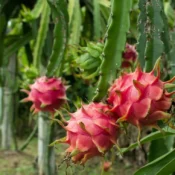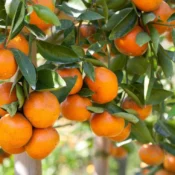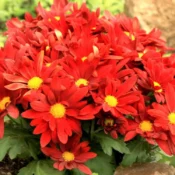Butterflies, with their colorful and elegant wings, are not only a visual delight but also play a vital role in pollination and maintaining ecosystem balance. To attract and sustain these beautiful insects in your garden, choosing the right host plants is essential. In this article, we’ll explore some of the key host plants and the butterfly species they attract, revealing a fascinating world of natural interactions.

The Role of Host Plants
Host plants play a critical role in the butterfly life cycle. It’s on the leaves of these plants that female butterflies deposit their eggs. When the caterpillars hatch from the eggs, they feed on the leaves of the host plant. The specific type of plant a butterfly uses as a host is crucial for its survival, development, and reproduction. Therefore, creating a garden with a variety of host plants is essential to attract a diversity of butterfly species.
Key Host Plants and Their Attractive Species

1. Milkweeds (Asclepias spp.)
One of the most well-known host plants is Asclepias, also known as “milkweed.” It’s the exclusive host plant of the iconic Monarch butterfly (Danaus plexippus). Monarchs lay their eggs on Asclepias leaves, and the emerging caterpillars feed on them. The highlight of this relationship is that Asclepias contains chemicals that protect the caterpillars and adult butterflies from predators, making them unpalatable.
2. Citrus (Citrus spp.)
Butterflies from the Pieridae family, like the Lemon butterfly (Papilio demoleus), often use citrus plants as hosts. Caterpillars feed on the leaves of citrus trees, such as orange and lemon trees. These butterflies are often recognized for their bright yellow wings and are common in many tropical and subtropical regions.
3. Passionflowers (Passiflora spp.)
The host plant of the stunning Glasswing butterfly (Greta oto) is Passiflora, also known as passionflower. The caterpillars of this butterfly are famous for their intriguing appearance and their ability to blend in with the host plant’s leaves. The Glasswing butterfly is known for its transparent wings with dark vein patterns.
4. Creosote Bush (Larrea tridentata)
The Orange butterfly (Aphrissa statira) is a species that often uses the creosote bush as a host. This butterfly has a vibrant orange color on its wings and is found in southern areas of the United States and Central America.
5. Legumes (Papilionaceae spp.)
Legumes, such as beans and peas, are host plants for various butterfly species, including the Cabbage White butterfly (Pieris rapae). Caterpillars feed on the leaves of these plants, and adult butterflies often visit the flowers for nectar.
6. Nettle (Urtica spp.)
Nettle is the host plant for the Red Admiral butterfly (Vanessa atalanta). This butterfly is known for its striking red and black wings. Red Admiral caterpillars feed on nettle leaves, a common plant in many regions. This relationship between butterflies and nettle is an interesting example of coexistence and adaptation.
7. Cherry Trees (Prunus spp.)

Cherry trees are host plants for various butterfly species, including the Eastern Tiger Swallowtail (Papilio glaucus). These trees are often found in temperate areas and produce showy flowers. Caterpillars feed on young cherry tree leaves, and adult butterflies visit the flowers for nectar.
8. Papaya (Carica papaya)
The papaya plant serves as a host for the Zebra Longwing butterfly (Heliconius charithonia). This butterfly stands out with its black and white wings featuring zebra-like patterns. Zebra Longwing caterpillars feed on papaya leaves, making this plant essential for the butterfly’s life cycle.
9. Cruciferous Vegetables (Brassicaceae spp.)
Plants from the Brassicaceae family, like cabbage, broccoli, and cauliflower, serve as hosts for the Cabbage White butterfly (Pieris rapae). This butterfly is easily recognizable by its white wings with black borders. Caterpillars of this butterfly feed on the leaves of these plants, which can pose a challenge for gardeners cultivating cruciferous vegetables.
10. Birch Trees (Betula spp.)
Birch trees are host plants for various butterfly species, including the Small Pearl-bordered Fritillary (Boloria euphrosyne). This butterfly displays orange and brown wings with black spots. Caterpillars feed on birch leaves, making them an important link in the food chain for these butterflies.
11. Maple Trees (Acer spp.)
Maple trees are host plants for various butterfly species, including the Spring Azure butterfly (Celastrina ladon). This butterfly features bright blue wings and is often found in wooded environments. Caterpillars feed on young maple leaves.
12. Blackberries and Raspberries (Rubus spp.)
Blackberries and raspberries are host plants for the Titania’s Fritillary butterfly (Satyrium titus). This butterfly is recognized for its brown-toned wings and distinctive eye-like spots. Caterpillars of the Titania’s Fritillary feed on the leaves of these wild fruit plants.
13. Oak Trees (Quercus spp.)
Oak trees are host plants for various butterfly species, including the Silver-bordered Fritillary (Boloria selene). This butterfly has brown wings with light spots and is common in forested areas. Caterpillars feed on oak leaves.
14. Yesterday-Today-and-Tomorrow (Brunfelsia spp.)

The Brunfelsia, commonly known as “Yesterday-Today-and-Tomorrow,” serves as a host plant for certain butterfly species like Methona themisto. Its captivating blooms and fragrance attract butterflies, adding to the diversity of your garden.
15. Black-Eyed Susans (Rudbeckia spp.)
Black-Eyed Susans are host plants for various butterfly species, including the Painted Lady butterfly (Vanessa cardui). Their vibrant yellow flowers not only beautify your garden but also provide a food source for caterpillars.
16. Yarrow (Achillea spp.)
Yarrow is a host plant for butterflies such as the Western Tiger Swallowtail (Papilio rutulus). Its clusters of small flowers are rich in nectar, attracting butterflies while enhancing the aesthetic of your garden.
17. Coneflowers (Echinacea spp.)
Coneflowers are host plants for butterflies like the Silvery Checkerspot (Chlosyne nycteis). Their distinctive daisy-like blooms offer nectar for adult butterflies and a habitat for caterpillars.
Thoughtfully selecting host plants is a key factor in creating an environment where butterflies can thrive. By providing the right plants, you’re supporting the life cycle of these beautiful insects and contributing to biodiversity preservation. Remember that different butterfly species have distinct preferences for host plants, so diversifying your garden can attract a wide array of species and allow you to witness the wonders of the butterfly life cycle up close. Be a guardian of nature by providing the ideal conditions for these small winged beings to flourish, keeping the magic of plant-butterfly coexistence alive.





